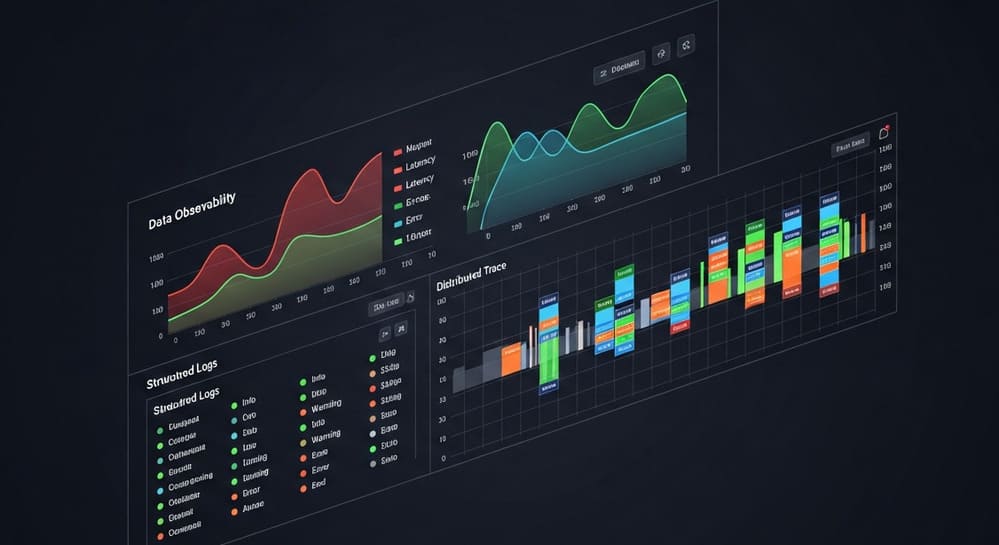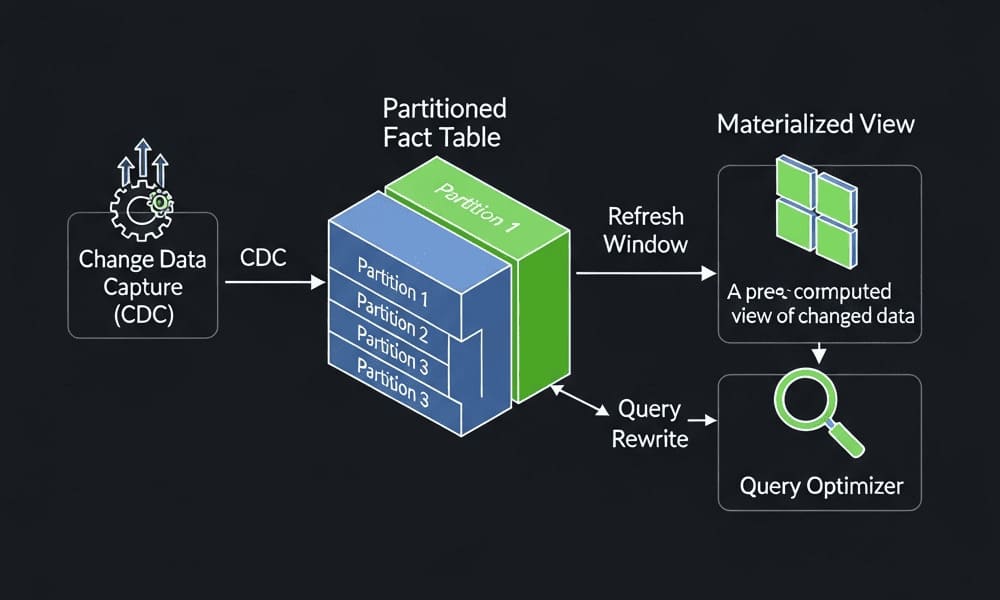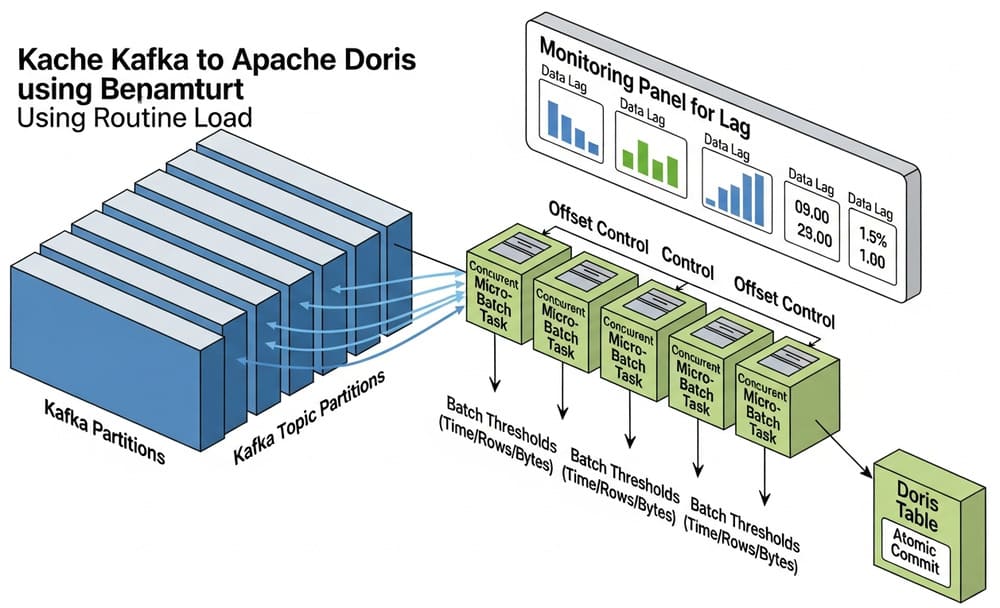Google Cloud SQL for Data Engineers: A Practical Guide to HA, Backups, and Secure Connections
Why Cloud SQL matters (and when it doesn’t)
You need a relational database that “just works” without babysitting VMs, packages, backups, or failover scripts. That’s Cloud SQL. It runs MySQL, PostgreSQL, and SQL Server as a managed service, so you can spend time on schemas and pipelines — not patching OS images. Google Cloud+1
Where it shines:
- OLTP apps with predictable workloads
- Analytics-adjacent services (feature stores, small dimensional tables)
- Lift-and-shift migrations off self-managed MySQL/Postgres/SQL Server
Where you might not want it:
- Massive global scale or strict multi-region RPO/RTO → consider Spanner
- Analytical MPP needs → consider BigQuery
- Postgres-compatible + advanced HA/replication → consider AlloyDB
Architecture fundamentals (the “what actually happens” layer)
At a glance:
- Engines: MySQL, PostgreSQL, SQL Server. Google Cloud
- Availability: Single-zone by default; enable regional high availability (HA) for automatic failover across zones. This materially reduces downtime during zonal events or maintenance. Google Cloud+1
- Backups & Recovery: Automated backups + Point-in-Time Recovery (PITR) let you restore to a timestamp — even if the instance was deleted. (Yes, really.) Google Cloud
- Connectivity: Private IP, Public IP, or Cloud SQL Auth Proxy/Language Connectors. Prefer private IP + Auth Proxy for least-surprise security. Google Cloud Documentation+2Google Cloud Documentation+2
- Auth: Use IAM Database Authentication where available to map cloud principals to DB users; fall back to built-ins if you must. Google Cloud+1
- Maintenance: Set a maintenance window so patching lands when you expect; you can also trigger self-service maintenance. Google Cloud Documentation+1
A minimalist “golden path” setup
Think of this as the safe default for most services:
- Enable regional HA on day one. It’s cheaper than explaining downtime to leadership. Google Cloud
- Automated backups + PITR enabled (default for new instances) and documented restore runbook. Google Cloud Documentation
- Private IP + Cloud SQL Auth Proxy/Connector from your runtime (Cloud Run, GKE, GCE). No direct public DB exposure. Google Cloud Documentation+1
- IAM DB auth for service accounts where supported; least-privilege roles at the project level. Google Cloud
- Maintenance window aligned to low-traffic hours; subscribe to maintenance notifications. Google Cloud Documentation
Real example: Python + SQLAlchemy with the Cloud SQL Connector
Below is a concise snippet for PostgreSQL using the Cloud SQL Python Connector and SQLAlchemy connection pooling. (Swap driver/URI for MySQL or SQL Server; official samples are linked.)
# pip install sqlalchemy pg8000 cloud-sql-python-connector
import sqlalchemy as sa
from google.cloud.sql.connector import Connector
INSTANCE = "project:region:instance"
DB_USER = "app_user"
DB_NAME = "app_db"
connector = Connector()
def getconn():
return connector.connect(
INSTANCE,
"pg8000",
user=DB_USER,
enable_iam_auth=True, # If using IAM DB Auth
db=DB_NAME,
)
engine = sa.create_engine(
"postgresql+pg8000://",
creator=getconn,
pool_size=10,
max_overflow=5,
pool_pre_ping=True,
)
with engine.begin() as conn:
conn.execute(sa.text("select 1"))
- Official Postgres/SQLAlchemy + Connector samples exist for MySQL, PostgreSQL, SQL Server. Google Cloud Documentation+2Google Cloud Documentation+2
- Prefer private IP + connector; add
--private-ipto the Auth Proxy when applicable. Google Cloud Documentation
Migration notes you’ll actually use
- Use Database Migration Service (DMS) for MySQL↔MySQL, Postgres↔Postgres, and many heterogenous paths (e.g., Oracle→Postgres). Dry-run latency and cutover time; plan for sequence/trigger refactors on heterogenous moves. Google Cloud Documentation
- Test logical replication or change streams for dual-writes/cutover windows when you can’t afford downtime.
Backup & recovery, without wishful thinking
- Automated backups daily + PITR gives you a time cursor. Practice restores to a new instance quarterly; don’t discover permission gaps during an incident. Google Cloud+1
- Document RPO/RTO per service and tie them to backup retention + HA settings.
ASCII recovery map (keep in your wiki):
[Write Bug @ 12:03] --> [Detect 12:20]
| |
v v
PITR to 12:02 Clone & Diff
| |
Validate ---> Swap Connection (blue/green)
Performance & reliability checklist (mid-level engineer edition)
- Right-size connections. Pool at the app layer (SQLAlchemy, HikariCP, etc.). Avoid per-request connects.
- Storage & editions. Review storage options (e.g., Hyperdisk Balanced, SSD) and edition features before picking defaults. Google Cloud Documentation
- Read scaling. Use read replicas or read pool autoscaling (PostgreSQL) for fan-out read traffic. Google Cloud Documentation
- Vacuum/Analyze (Postgres). Don’t fight autovacuum: tune thresholds for heavy churn tables.
- Hot path indexes. Prove with query plans, not vibes.
- Maintenance discipline. Set maintenance windows; consider self-service maintenance after skipping a rollout. Google Cloud Documentation+1
- Security defaults. Private IP + Auth Proxy/Connector + IAM DB auth (where supported). Block ingress by default. Google Cloud Documentation
Common pitfalls (seen in real teams)
- Public IP by inertia. Easy now, painful later. Use private networking and the proxy. Google Cloud Documentation
- No HA because “we’ll add it later.” Later never comes; outages do. Enable regional HA up front. Google Cloud
- Backups exist but restores don’t. Run PITR drills; verify app works after swap. Google Cloud
- Credential sprawl. Adopt IAM DB auth; rotate service accounts via your secrets manager. Google Cloud
Quick “getting started” commands
Replace placeholders; choose Postgres/MySQL/SQL Server variant in the console or Terraform if that’s your standard.
# Create a Postgres instance (console is fine; this is illustrative)
gcloud sql instances create my-pg \
--database-version=POSTGRES_15 \
--region=us-central1 \
--availability-type=REGIONAL \
--storage-auto-increase \
--enable-point-in-time-recovery
- Regional HA + PITR are the safe defaults for most production apps. Google Cloud+1
Internal link ideas (official docs only)
- Cloud SQL product overview → Google Cloud
- High availability overview → Google Cloud
- PITR configuration & how-to → Google Cloud Documentation
- Choose connection options (private/public, proxy/connector) → Google Cloud Documentation
- Python/SQLAlchemy connector samples → Google Cloud Documentation+1
- Maintenance windows & self-service maintenance → Google Cloud Documentation+1
Summary & call to action
Cloud SQL gives you managed PostgreSQL/MySQL/SQL Server with production-grade guardrails: regional HA, PITR, and secure connectivity that plays nicely with IAM. Get the basics right (networking, auth, backups, maintenance), and you’ll avoid 80% of the incidents I see in reviews. Next step: build a small service with private IP + connector, rehearse a restore, and set your maintenance window before your first deploy.
Want a hands-on follow-up? Say “make me a runbook” and I’ll generate a copy-paste operational runbook (provisioning, backups, restore drill, maintenance, and connection pooling) tailored to your stack.
Image prompt
“A clean, modern architecture diagram showing a Cloud SQL instance in regional HA with private IP, apps connecting via the Cloud SQL Auth Proxy/Language Connector, and PITR/backups — minimalistic, high contrast, isometric style.”
Tags
#CloudSQL #PostgreSQL #MySQL #SQLServer #GoogleCloud #DataEngineering #HighAvailability #PITR #Security #SQLAlchemy
Bonus: Pitch ideas for your next articles (Google Cloud SQL–centric)
“Read Scalability Patterns: Replicas, Read Pools, and Caching in Front of Cloud SQL” — when to scale reads vs. rethink data flow.
“Private by Default: Hardening Cloud SQL Networking with Private IP & the Auth Proxy” — deep dive with VPC diagrams and step-by-step setup.
“PITR Like a Pro: Designing and Testing Cloud SQL Disaster Recovery” — restore drills, RPO/RTO mapping, and cost controls.
“Cloud SQL vs. AlloyDB vs. Spanner for Postgres Workloads” — decision matrix for latency, HA, extensions, and throughput.
“Connection Management Patterns for Cloud Run + Cloud SQL” — pool sizing, cold-start impact, pre-warming, and timeouts.
“Migrating to Cloud SQL with Database Migration Service: Zero-to-Cutover” — homogenous and heterogenous paths, validation checklists.
“PostgreSQL Autovacuum in Cloud SQL: Practical Tuning for Write-Heavy Tables” — bloat control, visibility, and monitoring signals.
“Operational Excellence: Maintenance Windows, Self-Service Patching, and Change Windows in Cloud SQL” — avoiding surprise restarts.




